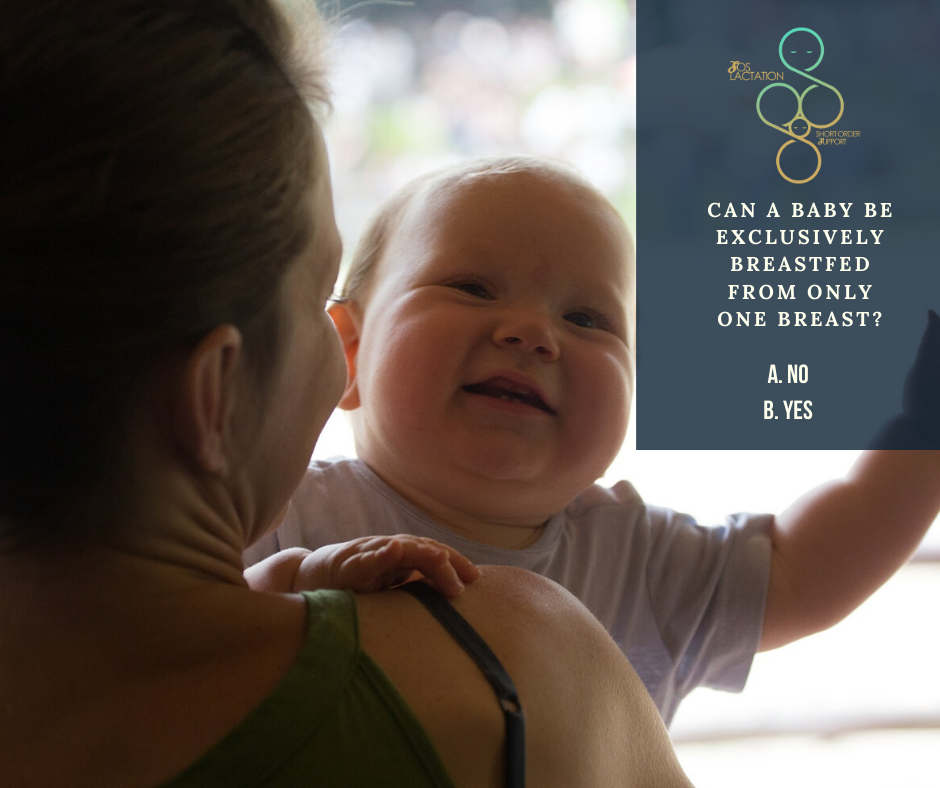The answer is B:
Women can indeed breastfeed from only one breast and practice ‘one-sided breastfeeding’.
One-sided breastfeeding is not uncommon. There are many reasons why a woman might opt to only breasted from one breast. It could be that an inverted or retracted nipple on one breast makes latching more challenging. Reoccurring mastitis, or plugged ducts, on one side may result in a mom deciding to wean off the affected breast. Mastectomies and other breast surgeries, insufficient glandular tissue, or low output can also be reasons why women may decide to breastfeed exclusively from one side. Some mothers intend to breastfeed from both breasts, but the same issues can also gradually lessen the output and they find themselves breastfeeding more and more on only one side. Other mothers find it easier to latch on one side and begin to favor the one side, resulting in low output on the less stimulated side. This makes it increasingly challenging to feed on the non-preferred breast.
Regardless of the situation, for most women it is possible to breastfeed on only one side and still have a full milk supply. There have even been women who have exclusively breastfeed twins from only one breast!
Things to remember when practicing one-sided breastfeeding:
Change Positions
To promote symmetry babies should feed on both sides of their body. Usually this happens naturally when mothers change breasts at each feed. One-sided breastfeeding should be done using different positions, so the baby has moments lying on both the right and left side of their body.
Drain Often
A full milk supply on only one breast means that breast will refill quicker and needs to drain often. Too much milk sitting in the breast too long can lead to plugs and mastitis. Get the milk out often enough to prevent engorgement and discomfort.
Good Latch
Making sure the baby has a good latch is very important. A good latch is the best way to ensure efficient feeding and draining the breast well. A poor latch can cause nipple pain and damage. When mothers have one painful nipple, they will usually breastfeed more on the opposite breast to give the damaged nipple time to heal. With one-sided breastfeeding this is not an option making a good latch even more important right from the start.
Following these three step will help one-sided breastfeeding happen smoothy!

